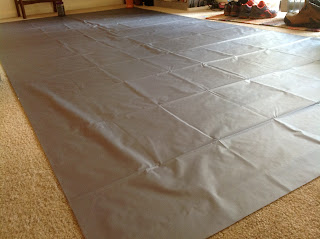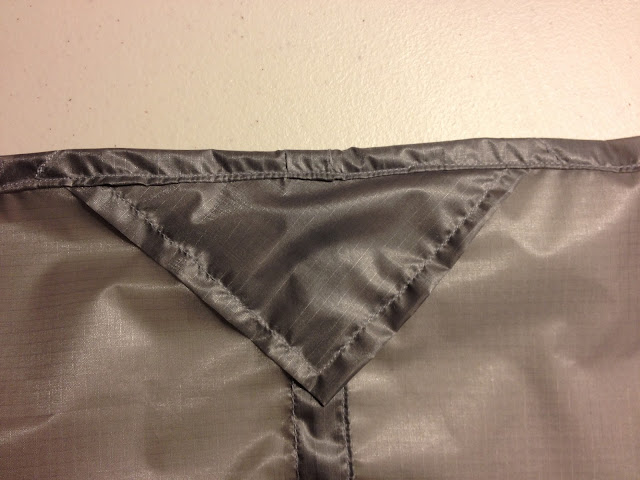1) Minimal complexity
2) Minimal weight
3) Minimal cost
4) Maximum protection/coverage: rain and wind
5) Maximum versatility
This will mainly be a shared shelter between two people so I've chosen an 8'x10' flat tarp constructed of 1.1oz. silicone coated nylon or silnylon. Quest Outfitters has a tarp kit and pattern that can be modified to fit my needs. I had a wonderful experience with Quest Outfitters and I would highly recommend them. The package arrived in North Carolina from Florida roughly 48 hours after my phone order.
 | ||
| The materials from Quest Outfitters |
 |
| Doubled over for equal lengths. Each panel becomes one side. |
 |
| Pretty! |
 |
| Trimming excess length to make a panel 50"x122". |
 |
| Test swatch. This is with an old needle with small pieces of slippery fabric so there was some puckering. |
 |
| Sew the ridgeline. I put 3 grosgrain loops on the ridgeline to hang a bivy, bug net, etc. |
 |
| Ridgeline reinforcement. |
 |
| Ridgeline reinforcement. |
I did make a stuff sack that I close with one of the guylines, saves a little weight.
 |
| Tarp guyline pulled out and cinched around the neck. |
 |
| Panthertown 4-13-13 |
 |
| Panthertown 4-13-13 |


No comments:
Post a Comment